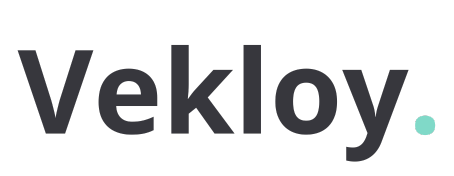The Ultimate Guide to WebP Image Conversion in PrestaShop for Better SEO

In today’s competitive e-commerce landscape, every aspect of your website needs to be optimized for performance, user experience, and search engine ranking. One crucial factor that often gets overlooked is image optimization. Large image files can slow down your site, negatively impacting load times, user experience, and ultimately, SEO. A powerful way to improve all of these aspects is through Prestashop WebP Images Conversion. In this guide, we will explore how converting your images to the WebP format can help you enhance your PrestaShop store’s speed, performance, and SEO.
1. What is WebP, and Why is It Important for SEO?
WebP is an image format developed by Google that supports both lossless and lossy compression. Compared to traditional formats like JPEG and PNG, WebP images are significantly smaller in size without sacrificing quality. This reduction in file size directly translates to faster loading times and enhanced website performance.
For SEO, WebP images are a game-changer for several reasons:
- Improved Site Speed: Faster page load times are essential for SEO, as Google prioritizes speed in its ranking algorithm. WebP images, being smaller in size, help load pages faster, which can contribute to better rankings.
- Better User Experience: Faster-loading pages lead to lower bounce rates and higher engagement. Users are more likely to stay on your site and make purchases if it loads quickly, improving overall user experience.
- Mobile Optimization: Mobile users often experience slower internet speeds compared to desktop users. Since WebP images are highly compressed, they help deliver faster load times even on mobile devices.
2. How WebP Image Conversion Boosts PrestaShop SEO
Incorporating WebP image conversion into your PrestaShop store brings multiple SEO benefits. Here’s how Prestashop WebP Images Conversion can boost your SEO efforts:
1. Faster Load Times = Better SEO Ranking
One of the primary ranking factors in Google’s search algorithm is page speed. If your store’s images are slowing down the load time, your rankings will suffer. By converting your images to WebP format, you reduce their file size, making them load faster. This improvement in speed can lead to a higher ranking on search engine result pages (SERPs).
2. Improved Mobile SEO
More users are browsing the internet on mobile devices than ever before. A fast-loading, mobile-friendly site is crucial for mobile SEO. Since WebP images are smaller and optimized for mobile browsing, they help ensure your PrestaShop store loads quickly on smartphones and tablets. This can directly impact your mobile search rankings, especially since Google uses mobile-first indexing.
3. Lower Bounce Rate
Users tend to leave websites that take too long to load. With WebP images, the reduced load time contributes to a smoother user experience. When users are happy with the site’s speed, they are more likely to stay longer and explore more pages, reducing your bounce rate. Lower bounce rates signal to Google that your site provides value to visitors, which can help improve your SEO.
4. Enhanced Crawl Efficiency
When Google crawls your site, it checks various elements, including images. WebP’s smaller file sizes allow for more efficient crawling, meaning Google can index your site faster and more effectively. This can result in better visibility in search results.
3. How to Convert Images to WebP in PrestaShop
To harness the benefits of Prestashop WebP Images Conversion, you’ll need to convert your images into the WebP format. Fortunately, there are several easy ways to do this within PrestaShop.
Option 1: Use a PrestaShop Module for Automatic Conversion
The easiest way to convert your images to WebP is by using a dedicated PrestaShop module. These modules automatically convert images to WebP format during the upload process and ensure that your site always serves the most optimized image files. Some popular options include:
- WebP Converter for PrestaShop: This module automatically converts your store’s images to WebP, including product images, category images, and banners. It also provides fallback support for browsers that do not yet support WebP.
- SEO Image Optimization: This module compresses and converts images to WebP while also improving SEO by automatically resizing and optimizing images for faster loading.
Once you install and configure the module, it will take care of converting all your images to WebP format.
Option 2: Enable Native WebP Support (PrestaShop 1.7+)
If you're using PrestaShop 1.7 or later, you can take advantage of PrestaShop’s built-in WebP support. The platform has native support for WebP images, allowing you to serve WebP versions of your images to browsers that support them.
To enable WebP support:
- Go to Shop Parameters > Images in the PrestaShop admin panel.
- Enable the "Enable WebP" option in the Image Settings section.
- Save the changes, and PrestaShop will start serving WebP images where supported.
This is a simple and effective way to implement Prestashop WebP Images Conversion without requiring any additional modules or manual effort.
Option 3: Convert Images Manually
If you prefer to manually convert your images to WebP, there are several tools available, such as:
- Online Tools: Websites like Squoosh and CloudConvert offer simple, fast WebP conversion without the need for software installation.
- Image Editing Software: Tools like Adobe Photoshop and GIMP allow you to save images as WebP files, offering more control over the quality and compression.
Once your images are converted, you can upload them to your PrestaShop store through the admin panel or FTP.
4. Monitor and Analyze Your Site’s Performance
After implementing Prestashop WebP Images Conversion, it’s crucial to monitor your site’s performance and assess the impact on load times and SEO. Use tools like:
- Google PageSpeed Insights: Analyze your website's speed and get recommendations for improvement.
- GTMetrix: Test how quickly your site loads and track the impact of your image optimization efforts.
- Pingdom: Monitor your site's performance and get insights into specific areas for improvement.
By keeping track of your site’s performance, you can continually refine your image optimization strategy to achieve the best possible results.
5. Best Practices for WebP Image Conversion in PrestaShop
To get the most out of Prestashop WebP Images Conversion, follow these best practices:
- Use Lossy Compression for Smaller File Sizes: If you want the smallest possible file sizes without sacrificing too much quality, use lossy WebP compression.
- Implement Lazy Loading: Lazy loading ensures that images are only loaded when they are visible in the browser’s viewport, reducing initial page load times.
- Optimize Image Dimensions: Resize images to the exact dimensions needed for your PrestaShop store, avoiding unnecessarily large images.
- Use a Content Delivery Network (CDN): Deliver WebP images through a CDN to ensure faster load times across various geographical locations.
Conclusion
WebP image conversion is a powerful tool for enhancing your PrestaShop store’s speed, improving SEO, and offering a better user experience. By implementing Prestashop WebP Images Conversion, you can reduce image file sizes, increase page load speed, and improve your store’s rankings in search engines. Whether you use PrestaShop’s built-in WebP support or a module, the benefits are undeniable. Start converting your images to WebP today and take your PrestaShop store’s SEO performance to the next level!
What's Your Reaction?




























































